Mad Hedge Technology Letter
September 18, 2018
Fiat Lux
Featured Trade:
(THE DANGERS OF PLAYING TECH SMALL FRY),
(FIT), (AAPL), (CRM), (FTNT), (SQ), (SNAP), (BBY)
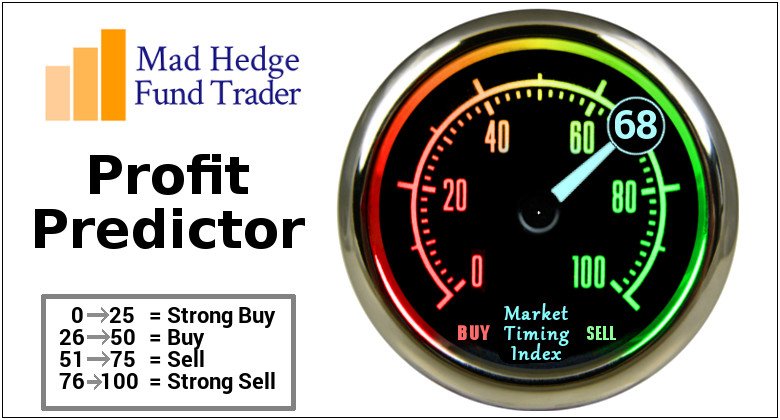
Mad Hedge Technology Letter
September 18, 2018
Fiat Lux
Featured Trade:
(THE DANGERS OF PLAYING TECH SMALL FRY),
(FIT), (AAPL), (CRM), (FTNT), (SQ), (SNAP), (BBY)

The No. 1 complaint the Mad Hedge Fund Technology Letter receives is that I focus too much on the tech behemoths, and do not allocate much time for the needle-in-the-haystack inspirations aiming to disrupt the status quo.
Let’s get this straight – both are important.
And when a gem of a company riding the coattails of monstrous secular tailwinds comes to the fore, I do not hesitate to usher readers into the stock at a market sweet spot.
Fortunately, many of the lesser-known companies I have recommended have hit their stride such as Salesforce (CRM), Fortinet (FTNT), and Square (SQ), while I alerted readers to avoid Snap (SNAP) like the plague.
There are a lot of moving parts to say the least.
The most recent annual Apple (AAPL) product release event was emblematic of why I cannot go to the well and recommend the minnows of the tech world on a constant basis.
In 2017, Apple registered more than $229 billion in gross revenue. And under this umbrella of assets is a finely tuned operational empire that stretches like the Mongol empire of yore from best-in-class hardware to innovative software services.
Last year brought Apple a king’s ransom of profits to the tune of more than $48 billion.
Many of these upstart firms are fighting tooth and nail to surpass the $100 million gross sales mark, which is peanuts for the intimidating large tech companies.
In the process of expanding their dominion far and wide, the net they cast extends further by the day.
I hammer home the fact that these cash-rich stalwarts have an insatiable drive to initiate new businesses as a way to position themselves at the heart of each groundbreaking trend and capture fresh markets.
Some decisions are rued and some – brilliant.
At the very least, they can afford a few hits.
Algorithms, which suck up voluminous amounts of data, carry out the best decisions that software can buy.
Managers wield these finely tuned algorithms to make precise bets.
These myriads of algorithms are tweaked every day as the level of tech ingenuity snowballs incrementally with each passing day.
Enter Fitbit (FIT).
This company was first known as Healthy Metrics Research, Inc., a decisively less sexy name than its current name Fitbit.
Healthy Metrics Research, Inc. unglamorously began as did most tech companies - with little fanfare.
Its cofounders James Park and Eric Friedman identified the opportunity to jump into the sensor industry, as they saw a monstrous addressable market for future sensors in wearable smart devices.
They soon caught a bid and $400,000 flew into its coffers. They promptly marketed designs to potential investors with nothing more than a circuit board in a wooden box.
Oh, how the wearable smart device market has advanced since those early days…
All in all, the idea was good enough for some initial seed money.
At the first tech conference marketing their new sensors, they were hoping to eclipse 50 orders.
Fortuitously, the upstart firm received more than 2,000 pre-orders, and a reset upward in expectations.
With momentum at their backs, the cofounders now had the sticky situation of physically delivering the end-product to the end-user.
This involved scouring Asia for reasonable suppliers for three-odd months with “7 near death experiences” mixed in the middle of it.
Highlighting the unglamorous nature of incubation stage firms were the cofounders once quick fix sticking a “piece of foam on a circuit board to correct an antenna problem."
Somehow and some way they debuted their product at the tail end of 2009, delivering 5,000 orders with a backlog of additional orders to boot, offering the company some stress relief.
Fitbit had the best product in an industry that barely existed, and everything was rosy at their headquarters in San Francisco.
Best Buy (BBY) even adopted its products, and Fitbit watches were flying off the shelves like hotcakes.
Margins were gloriously high. The lack of threats around the corner made the company the gold standard for smartwatches.
In short, the company was having its cake and eating it, too.
In 2011, Fitbit was furiously adding to the best smartwatch on the market installing an altimeter, a digital clock and a stopwatch to its premium product.
Then came embedded Bluetooth technology: able to track steps, distance, floors climbed, calories burned, and sleep patterns.
After being embroiled in several law quagmires over big data, momentum was still at their back, and Fitbit still managed to go public.
The IPO was a roaring success and then some.
The share price rocketed to almost $50, and the firm sat pretty in the middle of 2015.
Then the company’s shares fell to pieces in one fell swoop.
Fitbit’s stock cratered more than 50% in 2016. To inject new life into the company, CEO James Park trumpeted Fitbit’s imminent face-lift that would transform the young company from a "consumer electronics company" to a "digital healthcare company."
Bad news for Fitbit. Apple planned to do the same exact thing but do it better than Fitbit.
The readjustment to Fitbit’s grand plan was to combat the original Apple smartwatch that debuted on April 24, 2015 – three years ago.
The Apple smartwatch rapidly became the dominant smartwatch in the wearable industry, selling more than 4.2 million units in just one quarter alone.
Fitbit is now trading just a smidgen over $5 today, and the devastation is far from over.
Fitbit’s shares are down almost 1,000% from its 2015 peak, stressing the dangers that minnow tech companies face getting outgunned by companies that have superior talent, unlimited resources, and top-grade management.
Not only that, Apple can integrate any wearable device linking it with the rest of its ecosystem in a heartbeat.
Even better, it does not need to develop an operating system from scratch because it can use what it already has in place - iOS.
Even if it were to run into development troubles, it would be able to throw around a wad of capital to find someone to solve idiosyncratic issues that pop up.
Yes, Tim Cook has not been the second incarnation of Steve Jobs, but he has demonstrated a natural ability to become a trustworthy steward, advancing the interests of the company, its shareholders, and most importantly its lineup of ultra-premium products.
Fitbit was enjoying its beach promenade stroll and walked into a doozy of a tsunami with little warning.
Spearheading a revival is even more daunting.
For David to outdo Goliath takes an emphatic sum of capital and a master plan to go with it.
Fitbit has neither.
The most recent Apple product launch event introduced a gem of a smartwatch, and Fitbit’s shares once again are on life support.
With each passing Apple smartwatch iteration, Fitbit experiences a new dramatic leg down in the share price.
It is almost curtains for this company.
It will be unceremoniously laid to rest in what is now quite an expansive tech graveyard of futility.
The best-case scenario is possibly salvaging itself by drastic reinvention.
It is easier said than done.
Add this company to your list of small companies obliterated by the phenomenon known as FANG, and this story gives credence to investors trying to be cute with their tech investments.
On paper it looks great until the company becomes steamrolled.
And the paper Fitbit was written on doesn’t even look all that hot with Fitbit poised to lose money until 2021.
It sounds cliché, but the network effect cannot be underestimated.
Without this powerful effect, tech investors are exposed to a demonstrably higher level of risk.
The risk of extinction.
Stay away from Fitbit shares and any dead cat bounces that shortly arise.
The Apple watch series 5 could be the dagger that finishes the walking wounded.
As an endnote, the next potential Fitbit creeping closer to the eye of the FANG storm could be the smart speaker company Sonos (SONO).
Sometimes the calm before the storm can be awfully quiet.
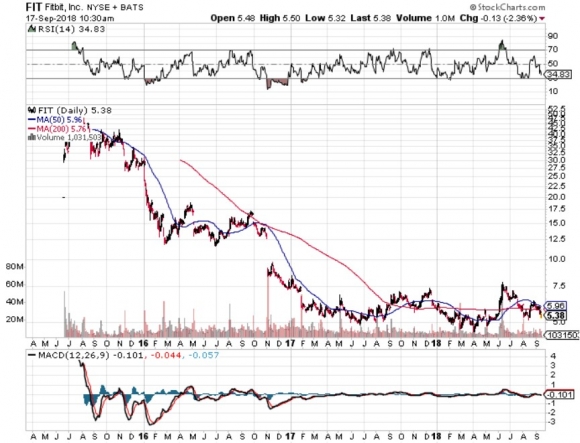
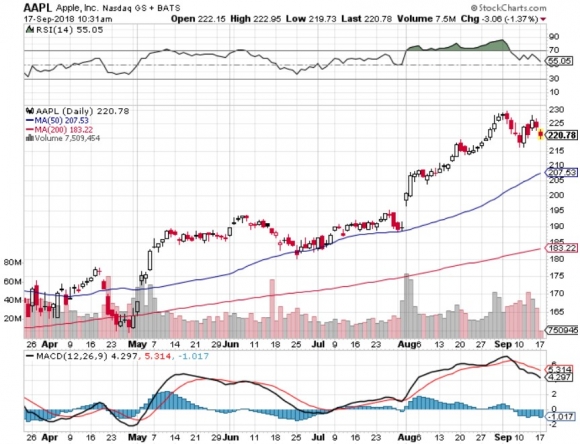
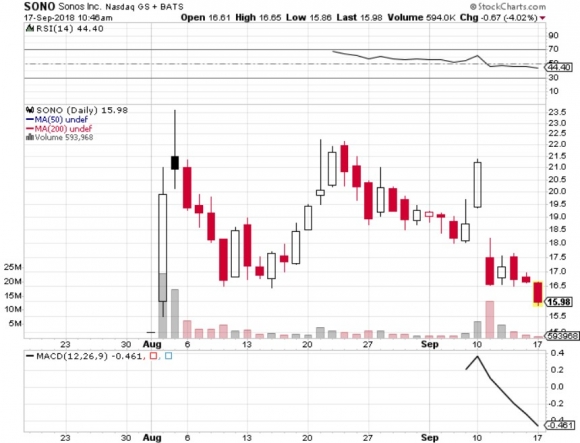
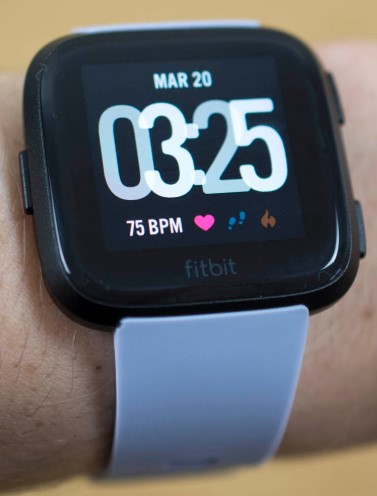
________________________________________________________________________________________________
Quote of the Day
“The best way to predict the future is to create it,” said influential philosopher Peter Drucker.

Legal Disclaimer
There is a very high degree of risk involved in trading. Past results are not indicative of future returns. MadHedgeFundTrader.com and all individuals affiliated with this site assume no responsibilities for your trading and investment results. The indicators, strategies, columns, articles and all other features are for educational purposes only and should not be construed as investment advice. Information for futures trading observations are obtained from sources believed to be reliable, but we do not warrant its completeness or accuracy, or warrant any results from the use of the information. Your use of the trading observations is entirely at your own risk and it is your sole responsibility to evaluate the accuracy, completeness and usefulness of the information. You must assess the risk of any trade with your broker and make your own independent decisions regarding any securities mentioned herein. Affiliates of MadHedgeFundTrader.com may have a position or effect transactions in the securities described herein (or options thereon) and/or otherwise employ trading strategies that may be consistent or inconsistent with the provided strategies.
This site uses cookies. By continuing to browse the site, you are agreeing to our use of cookies.
OKLearn moreWe may request cookies to be set on your device. We use cookies to let us know when you visit our websites, how you interact with us, to enrich your user experience, and to customize your relationship with our website.
Click on the different category headings to find out more. You can also change some of your preferences. Note that blocking some types of cookies may impact your experience on our websites and the services we are able to offer.
These cookies are strictly necessary to provide you with services available through our website and to use some of its features.
Because these cookies are strictly necessary to deliver the website, refuseing them will have impact how our site functions. You always can block or delete cookies by changing your browser settings and force blocking all cookies on this website. But this will always prompt you to accept/refuse cookies when revisiting our site.
We fully respect if you want to refuse cookies but to avoid asking you again and again kindly allow us to store a cookie for that. You are free to opt out any time or opt in for other cookies to get a better experience. If you refuse cookies we will remove all set cookies in our domain.
We provide you with a list of stored cookies on your computer in our domain so you can check what we stored. Due to security reasons we are not able to show or modify cookies from other domains. You can check these in your browser security settings.
These cookies collect information that is used either in aggregate form to help us understand how our website is being used or how effective our marketing campaigns are, or to help us customize our website and application for you in order to enhance your experience.
If you do not want that we track your visist to our site you can disable tracking in your browser here:
We also use different external services like Google Webfonts, Google Maps, and external Video providers. Since these providers may collect personal data like your IP address we allow you to block them here. Please be aware that this might heavily reduce the functionality and appearance of our site. Changes will take effect once you reload the page.
Google Webfont Settings:
Google Map Settings:
Vimeo and Youtube video embeds:
